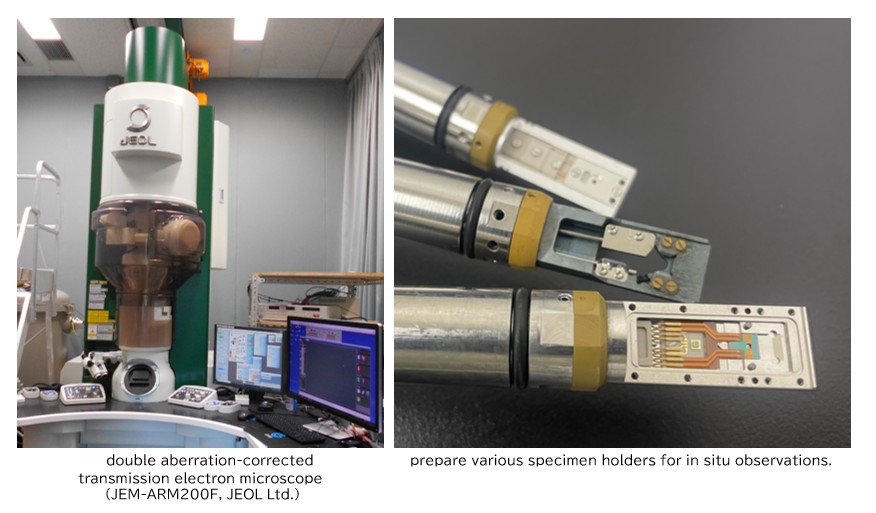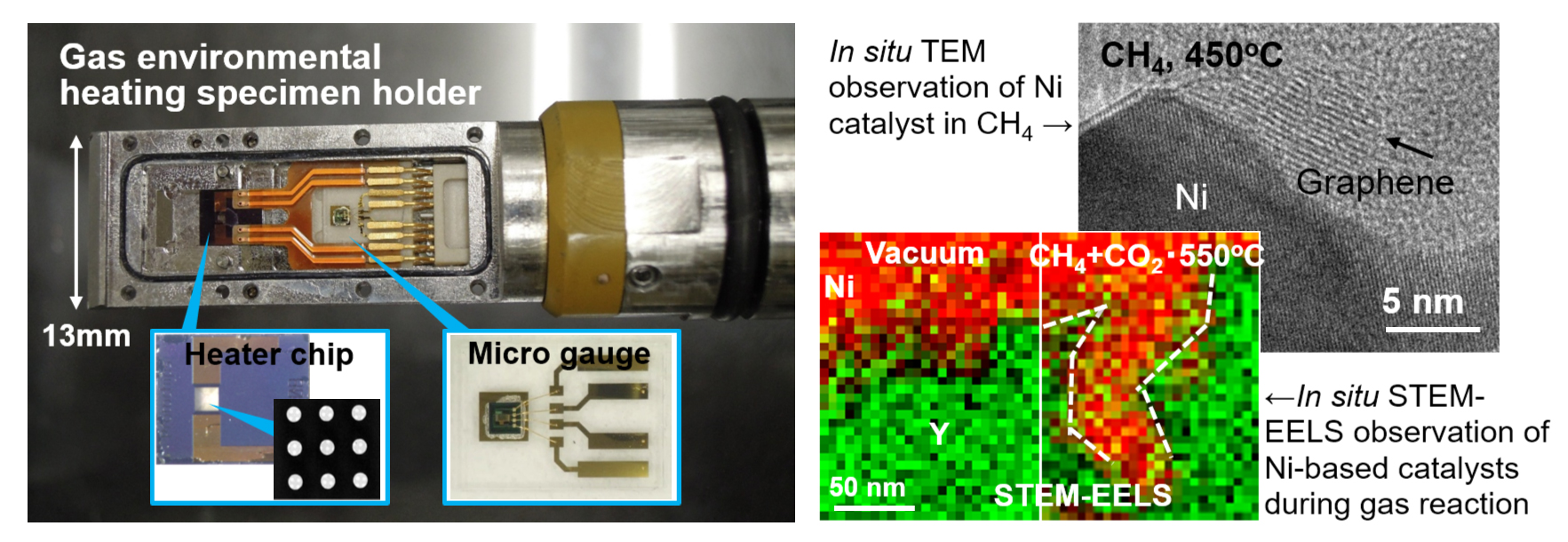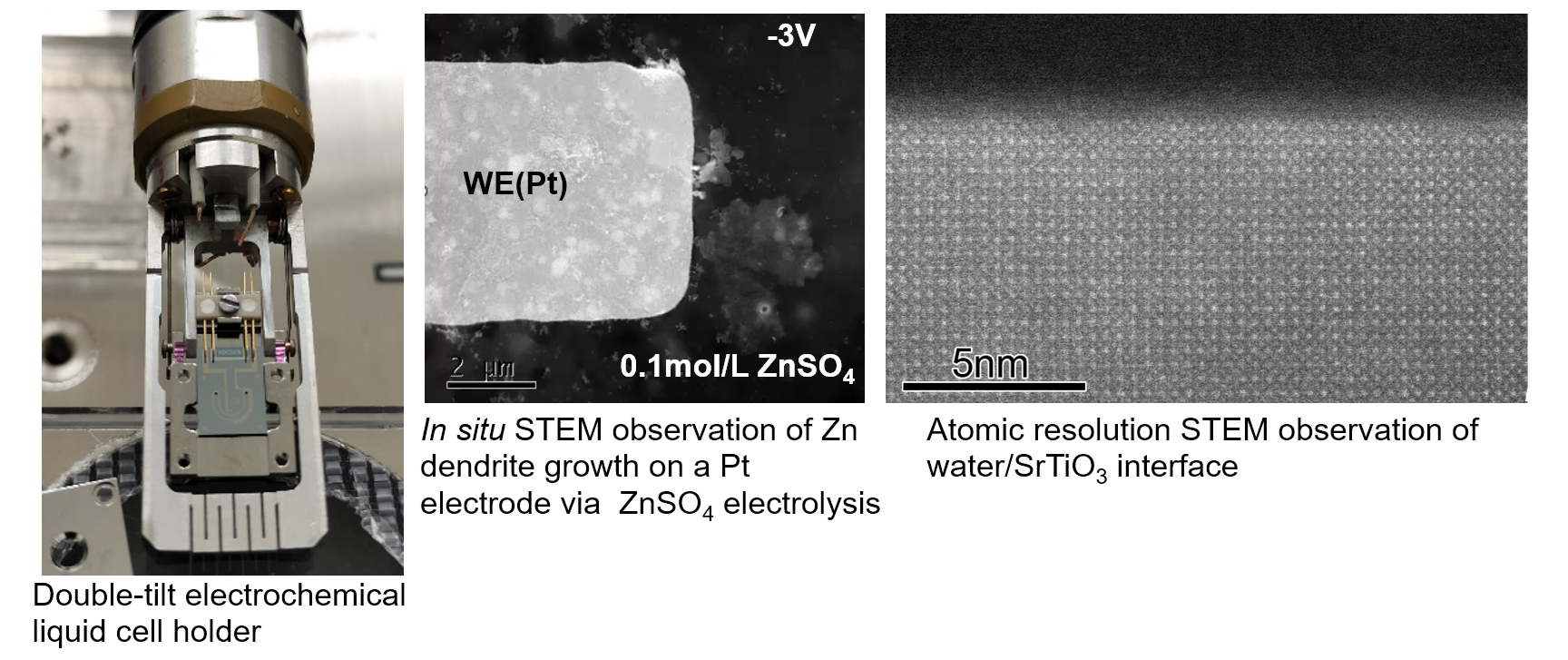Environment-Controlled Microscopy Group
Members
Ayako HASHIMOTO
SAMURAI
Group Leader, Environment-Controlled Microscopy Group, Battery and Cell Materials Field, Research Center for Energy and Environmental Materials (GREEN)

Masaki TAKEGUCHI
SAMURAI
Chief Researcher, Environment-Controlled Microscopy Group, Battery and Cell Materials Field, Research Center for Energy and Environmental Materials (GREEN)

Ryuto EGUCHI
SAMURAI
NIMS Junior Researcher (University of Tsukuba (NIMS Joint Graduate School)),
Environment-Controlled Microscopy Group, Battery and Cell Materials Field, Research Center for Energy and Environmental Materials (GREEN)

Masahiko SHIMIZU
SAMURAI
Trainee (University of Tsukuba (NIMS Joint Graduate School)),
Environment-Controlled Microscopy Group, Battery and Cell Materials Field, Research Center for Energy and Environmental Materials (GREEN)

Topics
Award
November, 2025 Dr. Masaki Takeguchi, Dr. Ayako Hashimoto MNC2024 Most Impressive Presentation Award(International Microprocesses and Nanotechnology Conference)
Award
June, 2025 Mr. Masahiko Shimizu (University of Tsukuba, NIMS Joint Graduate School Program) Best Presentation Award (The 81st Annual Meeting of The Japanese Society of Microscopy)
Award
May, 2025 Dr. Masaki Takeguchi Springer Nature Editor of Distinction Awards 2025 (Author Service Award)
Award
December, 2024 Mr. Masahiko Shimizu (University of Tsukuba, NIMS Joint Graduate School Program) Best Presentation Award for Young Scientist (The 40th Meeting of The Japan Zeolite Association)
Award
November, 2024 Dr. Masaki Takeguchi, Dr. Kazutaka Mitsuishi, Dr. Ayako Hashimoto Most Impressive Presentation Award (International Microprocesses and Nanotechnology Conference 2024)
Motivation and Outline
Material properties are closely related to microstructure, and therefore, microstructural analysis is extremely important for material researches and developments. Transmission electron microscopy (TEM) is one of the most powerful tools to analyze structures at the atomic level. However, because of the use of electron beams, a material should be placed in a vacuum for observation, its observation condition is different from an environment where the material is actually used. Therefore, our group works on in situ and operando TEM observations, especially in gas and in liquid phases. We develop specimen holders for in situ observation because the holders that hold specimens in a microscope are independent of the microscope and therefore, can be easily developed and improved. Recent microfabrication techniques such as micro electro mechanical systems (MEMS) have made it possible to create various environments by inserting parts into the tip of a holder with only a few millimeters thick. We also do in situ observations using the developed specimen holders. By capturing changes in structure and composition, we aim to elucidate the reaction and degradation mechanisms that are the key to higher efficiency, longer life, and lower cost.
Facilities
We own a double aberration-corrected transmission electron microscope (JEM-ARM200F, JEOL Ltd.) and prepare various specimen holders for in situ observations.

Research Results - In situ observation in gas phase
We have developed a gas-heating specimen holder for in situ observation of gas reaction catalysts. Most commercially available holders use a membrane, but we have also developed a specimen holder that uses differential pumping effects to create a gas environment without a membrane. Because of no membrane, the chemical state analysis and phase measurement are not affected by a membrane. In situ observation of catalysts allows us to capture not only the microstructural changes of catalyst particles, but also the oxidation and reduction reactions locally, in combination with chemical analysis instrument.

Gas-heated sample holder developed in-house (left) and in-situ observation during analysis (right)
Research Results - In situ observation in liquid phase
Liquid cell transmission electron microscopy (LCTEM) is a technique for in situ observation of samples in liquid phase using liquid enclosable environmental, in which samples in liquid can be observed through ultra-thin membranes that allow an electron beam pass. LCTEM has recently attracted attention because of the capability of observation of not only sample morphology and structure but also chemical reactions with high-spatial resolution. However, it still has many issues for high-resolution imaging and therefore it has not become widespread yet. We study optimum cell membrane materials and methodologies for high-resolution imaging such as a double-tilt LC and a graphene LC. We also develop new LC holders equipped with light illumination and electrochemical functions for conducting application research of in situ TEM observations of photocatalysts and electrocatalysts.

Two-axis tiltable electrochemical liquid cell holder (left), in situ STEM observation of zinc dendrite growth on platinum electrode during ZnSO4 electrolysis (center), atomic-resolution STEM imaging of water/SrTiO3 interface (right).



